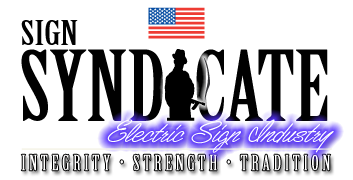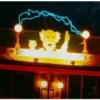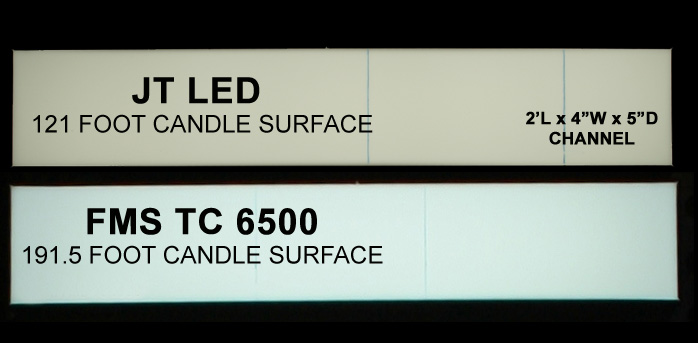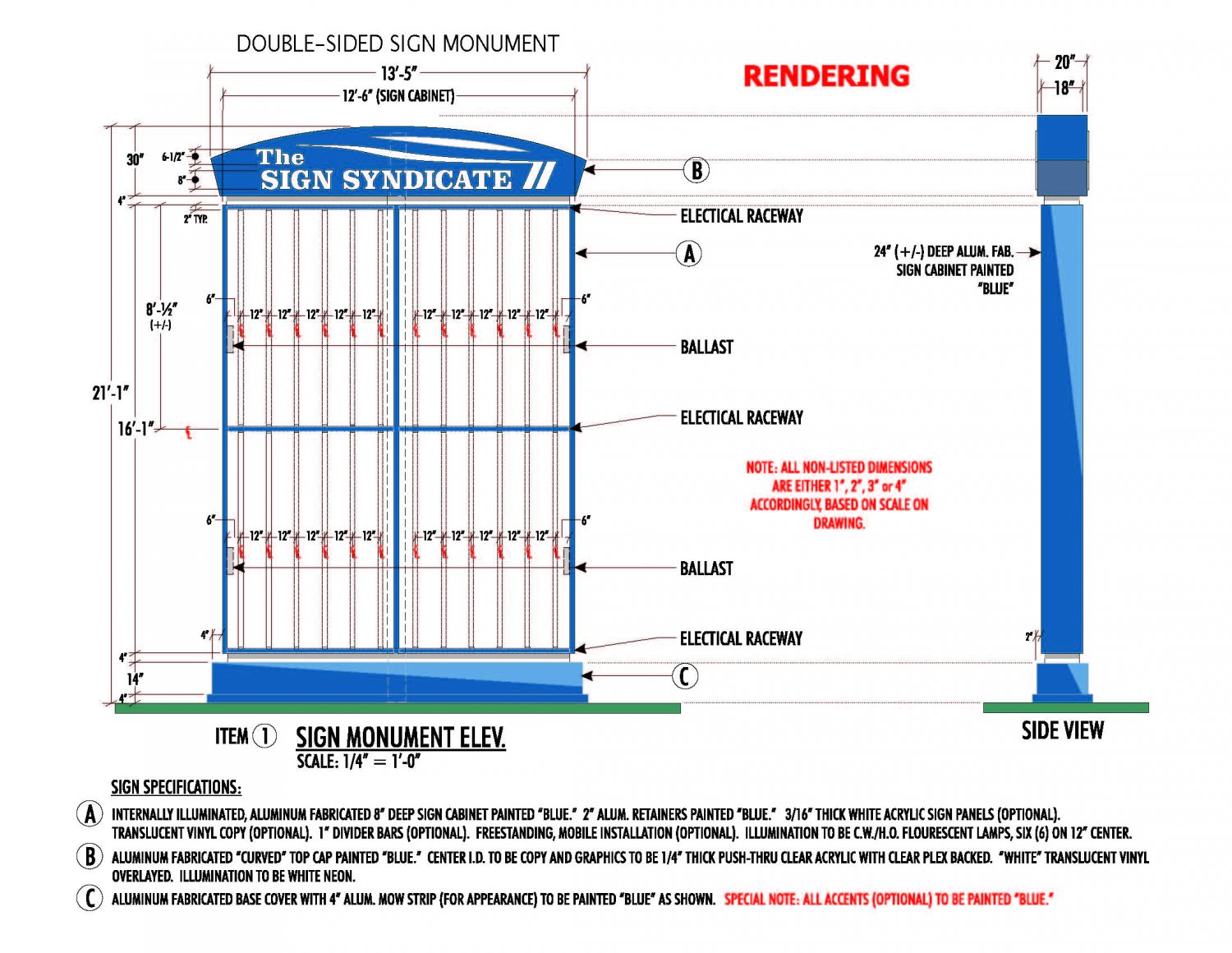ELECTRIC SIGN SUPPLIES
If You're Looking For Premium Electric Sign Industry Components From Trim Cap, LED's, Neon Supplies, Power Supplies, Pattern Paper. Then Please Visit Our Online Store or Feel Free To Call Us For Inquiries or Placing an Order!!
Buy Now
SIGN INSTALLER MAP
Looking for a fellow Sign Syndicate Company Member For A Sign Install or Maintenance Call?
Click Here
For Sign Company's Who Work As Subcontractors
Before You Work For A National Sign & Service Company You Need To Look At The Reviews Of These Companies Before You Work For Them. Learn When To Expect Payment From Them and What It's Like To Work For Them, The Good, The Bad, The Ugly. Learn and Share Your Experiences Yourself For Others
Click Here
Leaderboard
Popular Content
Showing content with the highest reputation on 05/16/2017 in all areas
-
Original article I was asked to rebut The Original 360˙ Image Article - March 2017 Issue 0_image360_mar2017_whitepaper-1.pdf Which reads without Downloading Below, The Official Rebuttal below... Image 360's "A Brighter Idea? - Converting fluorescent or neon signs to energy-efficient LED illumination" ARTICLE COMMENTARY More mis-infomration and mis-characterazation of light sources......so let's do this casually Whether you are a light source user fabricating signs in the electric sign industry or the end user consumer there is a lot to know when it comes to light sources. Mainly, ALL light sources whether it's Neon, Fluorescent, or LED, ALL have their strengths and weaknesses based on the application of your intended project. Not ALL applications are the same, and the environment in which the light sources are in can play a key factor of success or failure. Those of us that have been in the industry for a period have all seen failure of components that never did live up to the hype or the marketing claims on the manner of which the products were pushed either by distributors or by what we read in trade magazines written my manufacturer reps. What this article fails to tell the reader is, well...a lot. It's hard to tell whether it was intentional or regurgitation of marketing points done by others (outsiders), in either case it's damaging to the electric sign industry, and readers should be cautioned. So let's begin by breaking it down so we can separate fact from fiction and do good for the consumer who buys our integrated products used for electrical identification. Ask anyone in this industry who has been around long enough to see trends, and someone who is worth their salt will tell you, magnetic transformers, magnetic ballasts, or magnetic LED power supplies will last significantly longer than solid state versions. Yes, electronics are smaller, you will save over cord and coil, but magnetics are just simple and without electronics their just make up of coils, not a whole lot can go wrong with them. Heat can play a big roll of failure when it comes to electronics because as we all know, electronics and heat don't mix. One of the first claims to roll out of this article is "Energy Efficient"....."energy savings of up to 80%" Nothing unusual about that, we see that in any trade magazine we pick up today and we've all heard the same points from just about any manufacturer rep who might sit your company project managers down and who buys them all lunch (to obligate you to buy from them) while they go on with their presentation. No real big headlines here right? First, let's put aside what we think we know about light sources used in the electric sign industry by what you were told, or what you may have read. This next part is VERY important to remember. When someone says that one light source is more "energy efficient" over another, then the two light sources must have equal light output and THEN one has to work at a lower cost of operation. When the said product can, only then can we truly say a product or light source is more "energy efficient". This is key! 90% of the time we will read these claims in a trade magazine, marketing ad, or by a manufacturer rep trying to sell us something. Only to find if you actually took the LED product that only consumes .4 watts a module, we might see something different if we made our own comparison. So let's do that! We'll use JT LED as a example for our model below for visual purposes only, at 3 modules per foot put into a 2' long channel, 4" wide, 5" deep, a #7328 white acrylic face. We'll use this as our ideal channel letter, because our standard for channel letters is, anything over 4" would require a second stroke of material, be it Neon or LED. Let's compare it to another channel sitting side by side, which houses a 15mm 6500K neon lamp (we'll use a FMS Neon TC Lamp). The surface light on the Neon side would be overwhelmingly brighter, not much of a fair comparison, but this is what is always compared and the claim is, "LED is brighter, better, etc etc". How would you ever know unless you compared??? These days not many have ever illuminated channel letters with Neon, especially LED reps. LED Channel 121 Surface Foot Candle Average Neon Channel 191 Surface Foot Candle Average The Neon channel is nearly 37% brighter than the LED Let's look at the cost of operation An LED Channel with 3 modules per foot x 2' x .40 watts = 2.4 watts (Electronic) A Neon Channel 15mm 6500K 2' (15mm Hg - 3 watts per foot) x 3w = 6 watts (Magnetic) Using LED modules you will save 60% in cost of operation over the Neon Channel. Something to throw out, we could have used an electronic Neon transformer and saved about 30% but let's keep it extreme for sake of discussion. So to save 60% in energy you must give up almost 40% of light, and depending on what LED you choose, how long would it last? Most of the time you get what you pay more, but NOT always. What would the lumen maintenance be of that LED product in say 3 years, 5 years? What we see in the article is claimed savings, but what they are doing in reality is comparing a pen light to a mag light and telling consumers the pen light is more "Energy efficient" because their using smaller, less power batteries to operate under, leaving out the fact that the Mag Light puts out much more light. Signs like advertising is about Competition right? Light is also competition when a sign is sitting in a strip center or shopping mall. Back To Reality... The fair comparison is to step up the LED Module power to a 1 watt module or .92 watt module for a near equal light output comparison, if we're comparing LEDs to Neon let's redo this with a .92 watt (using a our NC "Reckless" LED module for example). LED Channel 190 Surface Foot Candle Average Neon Channel 191 Surface Foot Candle Average The Neon channel is nearly .005% brighter than the LED, or nil to nothing, let's call them equal for sake of argument. Let's look at the cost of operation again LED Channel with modules 3 modules per foot x 2' x .92 watts = 5.52 watts (Electronic) Neon Channel 15mm 6500K 2' (15mm Hg - 3 watts per foot) x 3w = 6 watts (Magnetic) Again, we won't do it here, BUT we could have saved nearly 30% in energy using a Electronic Neon Transformer which we did not. Using LED modules you will save 8% in cost of operation over the Neon Channel Is one more energy efficient over the other in this comparison....YES! But not my much or as much as claimed. Like most instances you can use the lower wattage LED modules in channel letters or sign cabinets and sign suppliers and mfg reps will tell you, you can use less LEDs to stretch power supplies for "usable light". That is true....and...well and good when you see these models on a show room floor, or at a convention for an "Ooooo and Ahhh". The problem with that lays when you put that same sign out in a strip center or shopping mall and now it has to compete against other signs and light sources. The customer will complain, you will bring that sign back into your shop and that three (.4w) modules, or one module (1w) per foot soon turns into 9 and 3 modules (sometimes tripling material) just so it can compete with conventional light sources already out on the field, the ROI just went up at this point for any kinds of savings in retrofitting or a project sold as "Energy Efficient" Which can bring us to.... "Retrofitting". We as sign makers will make money on retrofitting. It's the new profit farming idea put out from just about every LED manufacturer to motivate YOU to go to your customers or create new accounts with the idea of $$$-SAVING MONEY-$$$. Oh and possible "rebates" energy companies hand out, a handicap subsidy paid for by the taxpayers. Why handicap a product? A whole other topic for another time. I have personally seen the most outrageous "propaganda", and I'm been nice in using that word because that's exactly what it is. It's shameful to know so many in this industry and to see quite a few trying to convince sign shops so much money can be made buying THEIR products and inspire/motivate you to sell consumer on retrofits. Putting on presentations knowing full well Neon does not consume 10 to 12 watts per foot, especially clear red (Neon gas pumped). As licensed Electrical Sign Contractors we must have our business ethics and sense of integrity, and it is not fair to unjustly convince a consumer to retrofit their existing Neon Channel Letter sign over to LED based on magic fuzzy math and figures. We know from our own testing and evaluations which we won't go into here, that Neon & high powered 1-watts LED modules, their light output will degrade over time 30% to 40% over 40,000 hours of operation, or nearly 14 sign years if left on 8 hours a day. One thing to stress, very few high powered LED's make it that long, and in our testing only two products made it that long, GE (Power Tetra MAX) & Axiom's High Powered LED. Lower power LED's i.e .4 watt modules produce less heat, less stress, and under driving we can expect longer life, but more than not, even that's not always the true or the case. A topic for another time. Doing our own calculations without labor we've seen the ROI from 20 to 40 years just for the consumer to make their money back. You have to ask yourself, did you pick the right components to last 20 to 40 years, how many times will you need to re-retrofit the retrofit? Being in this industry we've seen many large sign programs fail and burn with utter disaster, resulting in thousands of locations needing a "re-change" over. If the Environment plays a big key for you into choosing the right light source. Something else omitted from this article....... TEMPERATURES Yes, correct. Standard 30ma Neon systems do not like cold weather and are affected because the mercury (Argon fill) inside condenses up in the cold. BUT, if you're using red Neon lamps, clear with Neon gas and no mercury or even orange (Green pumped red), light output is not affected by temperatures because it's just glass and gas. In most cold regions shops will bump the 30ma system to a 60ma doubling the cost of operation for cold weather purposes for heating up those lamps, or change gas. But these days unfortunately, there aren't that many 60ma Neon Magnetic Transformers still being produced (**Except Franceformer), namely only electronics which can limit jobs in cold weather for exposed argon filled lamps because GTO cannot touch metal surfaces. With cooler temps Neon and Fluorescent lamps will dim, and LEDs will prosper. The Flip side. There's a what? Neon & Fluorescent lamps are brighter in warmer climates, and LEDs dim in warmer weather, LEDs can catastrophically fail in these conditions because just like computers and electronics, they hate heat. Temperatures cannot make Neon lamps catastrophically fail. This is what separates one LED mfg product from another, how is it dissipating heat, can it dissipate the heat? This is for another discussion. It should also be noted, companies like Voltarc make a double insulated T8 Lamp for cold weather, this means the temperature won't affect the light output much. This is why it's important as a sign producer, we must ask ourselves, where is this sign going? Somewhere extreme like Minnesota cold or Arizona heat? Some big banking sign programs that have catastrophically failed have learned from their big failures and have hybrid system in place. Based on sign sizes of geographical location will be specified with Neon or LEDs THE ENVIRONMENT This is nothing other than good fear marketing, and a good way to sell based on guilt and create headlines where there are none. The truth is..... mercury is a natural element, and it's everywhere naturally....Streams, Volcanoes, in the forests and it's released naturally....there is no escape! The mercury in a lamps is it's purist form (quicksilver), and unless you decide to open a vile of mercury and inhale the vapor, the world will still keep on spinning, and children will continue to play out in the streets as far as our industry is concerned with it. Most environmental groups are extreme and work against our industry under an assumption "a rogue Neon bender could simply pour mercury down the drain and poison people". Believe me, I know....I've had these conversations with them and when they see these fake headlines it peaks their interest and it's ammo for their cause and there is a reason why that sentence is in quotes. Neon & Fluorescent Lamps are 100% recyclable. LEDs are not. What??? LEDs have a lot of metal toxic content, something left for another topic. So it's best not to sling mud at one industry when your backyard can be just as messy and controversial. The average home consumer will throw out Hg (Mercury) lamps and think nothing of using a recycling center. As professionals in our industry we dispose of these lamps commercially, we don't just simply toss them in a waste bin somewhere where it will be dumped off next to the puppy farm's drinking water. Which begs the big question about LEDs, what to do with those since they are composed of toxic metals? Landfill??? Most LEDs today are come from China just like about everything else. China has coal plants....not exactly the best clean coal plants to date. What do coal plants put into the atmosphere?.....Mercury. If environmental impact is a large concern to you like it was in the image 360 article, would you rather buy a product that has mercury trapped in glass that gets recycled, that is energy efficient in it's own right, or from another that puts it into the atmosphere? Burn a 1000 watts to build a product that uses 5 watts??? Something to note if the 'Green" movement appeals to you. U.L. or Underwriters Laboratories, and most all know them in our industry if you produce electric signs, UL lists Neon as a "Green" product, and has a Green Product listing. Something we did not see in this article, we only read the words "hazardous". PRODUCT AVAILABILITY Mis-information. The replacement of a single Neon unit or Fluorescent Lamps is much more inexpensive than having to replace failing LED modules. Lets think for minute. We've all seen failures of Neon, Fluorescent and LED signs all around town. You can take just about any 6500K lamps whether it's Neon or Fluorescent and replace it, and match up isn't that bad unless it's had years of lumen maintenance. Those conventional light source component manufacturers have not changed that technology or products much, and you can always expect what you'll get from them. The Hg Lamp industry has a better more solid standard than LEDs at the moment. Those lamps and glass are they same as they were 20 years ago. With LEDs, not so much. As we walk into the next big sign like the upcoming ISA convention we can expect to see the new LED modules by our choice vendor 10.0, next year will be 11.0, 12.0 after that. When a LED fails and even in a short few years, your chances of finding that LED can be next to impossible leaving you with the choice depending on how much failure to replace the whole existing sign. Cross your fingers you're not mixed up into a major sign program and replacing thousands! UNLESS you're the subcontractor who will make the labor on that change out! LEDs are exactly what their touted, technology. Technology always changes. You can walk into any sign supply house and buy a few feet or single lamp for service, with LEDs you must purchase by the Tray or box, sometimes a carton, a much higher cost just for a simple maintenance job. A cost that must be passed off to the consumer, who might not the that happy when sold on 50,000 to 100,000 hours of dependability FLUORESCENT LIGHT SIGN CABINETS & RETROFITTING Sometimes old technology gets better. Most run of the mill Fluorescent HO (High-Output) lamps are inexpensive and their usually a single halo-phosphate lamp. Lamps do improve. Just like Neon and Fluorescent Lamps, their both also available in high light output lamps, or Tri-Phosphor Lamps. Tri-Phosphor lamps are a brighter "whiter" lamps, that last longer, and stay white much longer over time than conventional single halo-phosphate lamps. Companies like Voltarc who specialize in premium light source products have even gone so far as to improve the HO Lamp electrodes for longer life. Voltarc lamps are specified out in many large sign programs and for good reason. Their Tri-phosphor lamps, T-12 & T8's are rated for 60,000 hours of operation, and it goes against the marketing of LED manufacturers that claim HO Lamps will often only last 5,000 hours of operation, need to be changed out often, "buzz and blink" not that they ever did anyway. This brings us to our finale and final project we will share with you the industry. We can all plug away with products we all use to see if Retrofitting Sign Cabinet's to LEDs is truly worth their claim. Don't get me wrong, under the right circumstances it can be! This is a project that we did on The Sign Syndicate a few years back to study Retrofitting and possible ROI (Return on Investment). It's just casual and not concrete, we do leave a few things out that's up to you to insert. RETROFIT PROJECT A customer calls you up and wants to know when they can expect to reach their Return On Investment for possibly retrofitting their T12 Pylon Sign to LEDs as an option, because they always read about energy saving using LEDs, and they have been visited by a rep. You discover the sign specification below after a survey Current Sign Specifications • 24 - T1296F Conventional single halo phosphate Lamps • 4- old 48' Magnetic Ballasts • 48 - Rude looking HO Lamp Sockets that have seen better days You have a couple of choices. Go LED or consider using an improved conventional light source system, HO Lamps and Electronic Ballasts because Magnetic Ballasts are not really being manufactured anymore. An improved Fluorescent HO Lamps system means "energy efficiency" because for the same power you're getting a brighter longer life lamps going from single halo-phosphate to tri-phosphor for the same cost of operation, and you're also saving from going magnetic ballast to electronic ballast. Let's look at a few products to choose from for this quick project/discussion Voltarc 8' - T12 HO Tri Light Max (Tri-Phosphor) Lamps - 6,190 Lumens, 67 Watts Each 8' - T8 HO Tri Light Max (Tri-Phosphor) Lamps - 7,467 Lumens, 74 Watts Each GE (Double Sided) 8' - Line Fit LED- 5,760 Lumens, 57.12 Watts Each Principal LED (Double Sided) 8' - Qwik Stik (Double Sided) 4,316 Lumens, 42.4 Watts Each LIGHT OUTPUT Voltarc T8 - 7,467 Lumens 17% Brighter than a T12 23% Brighter than the GE Line Fit 42% Brighter than the Principal LED Qwik Stik Voltarc T12 - 6,190 Lumens 7% Brighter than the GE Line Fit 30% Brighter than the Principal LED Qwik Stik GE Line Fit - 5,760 Lumens 30% Brighter than the Principal LED Qwik Stik ANNUAL COST OF OPERATION What it costs to run each system annually HO Lamp Proposal 1 - T12 (6,190 Lumens) T12 Lamp Retrofit 24- Tri-Phosphor Lamps, & 4- Electronic Ballasts, 48 HO Sockets 24 Lamps x 67 watts = 1,608 Watts 24 Lamps x 10 Hours a day x 365 Days a Year x $.12 KWH/1050 (Power Correction) = $670.76 Annual Cost of Operation HO Lamp Proposal 2 - T8 (7,467 Lumens) T8 Lamp Retrofit 24-Tri-Phosphor Lamps, & 4- Electronic Ballasts, 48 HO Sockets 24 Lamps x 67 watts = 1,776 Watts 24 Lamps x 10 Hours a day x 365 Days a Year x $.12 KWH/1050 (Power Correction) = $740.84 Annual Cost of Operation GE Line Fit (5,760 Lumens) 24 LED Line Fit Lamps, 8- 180 Watt LED Power Supplies, 24 Rails, 48 End Caps, 48 Sockets 24 Lamps x 54.2 Watts = 1,300.80 Watts 24 Lamps x 10 Hours a day x 365 Days a Year x $.12 KWH/1050 (Power Correction) = $542.62 Annual Cost of Operation Principal LED Qwik Stik (4,316 Lumens) 24 Qwik Stik LED Lamps, 12- 120 Watt LED Power Supplies or 6 - 264 Watt LED Power Supplies 24 Lamps x 54.2 Watts = 1,017.60 Watts 24 Lamps x 10 Hours a day x 365 Days a Year x $.12 KWH/1050 (Power Correction) = $424.48 Annual Cost of Operation COMPONENT COSTS Fluorescent Lamp Retrofit Voltarc TriLightMax T8 Lamp $22.10 Each x 24 = $530.40 (7,467 Lumens) Voltarc TriLightMax T12 Lamp $25.54 Each = $612.96 (6,190 Lumens) 48' Ballast $69.00 Each x 4 = $276.00 HO Lamp Socket $1.19 Each x 48 = $57.12 T12 Tri-Phosphor Lamp Retrofit total cost of components $946.08 (6,190 Lumens) T8 Tri-Phosphor Lamp Retrofit total cost of components $863.52 (7,467 Lumens) LED Retrofit GE Line Fit 8' Lamp $180.00 Each x 24 = $4,320.00 180w GE Power Supply $97.14 Each x 8 = $777.12 8' Rails Each x 24 = End Caps Each x 48 = Total Cost of Components = $5,097.12 (5,760 Lumens) Principal Qwik Stik 8' Lamps $89.99 Each x 24 = $2,159.76 6 Principal LED 264w Power Supply $157.65 Each x 6 = $945.90 Total Cost of Components = $3,105.66 (4,316 Lumens) RETURN ON INVESTMENT This is a calculation of annual energy cost saving vs upfront initial cost investment. GE Line Fit (23% Dimmer than the Voltarc T8) (7% Dimmer than the Voltarc T12) How long would it take for a Retrofit package using a GE Line Fit System to break even using the initial annual energy consumption savings versus the initial cost, and how many years would it take to make that back? Initial Cost $5,097.12 / Savings using Fit Line over T12 = $128.14 Annually= 39.77 Years (145,160 Hours) Initial Cost $5,097.12 / Savings using Fit Line over T8 = $198.22 Annually= 25.71 Years (93,841 Hours) Principal LED Qwik Stik (42% Dimmer than the Voltarc T8) (30% Dimmer than the Voltarc T12) How long would it take for a Retrofit package using a Principal LED Qwik Stik System to break even using the initial annual energy consumption savings versus the initial cost, and how many years would it take to make that back? Initial Cost $3,105.66 / Savings using Fit Line over T12 = $246.28 Annually= 12.61 Years (47,121 Hours) Initial Cost $3,105.66 / Savings using Fit Line over T8 = $316.36 Annually= 9.82 Years (35,843 Hours) In most cases when it comes to retrofitting, it won't make business sense to spend the upfront cost. For this project the sign shop can spend less than $1,000.00 in material and simply swap out old sockets, add new long life lamps rated for 60,000 hours and ballasts. What we did not add in is labor, and small component parts needed for the LED systems, this will bump those figures up because with an HO System you're replacing four ballasts, with the LED systems you're adding in more, in some cases 6 to 8 power supplies. This is just a generous / casual comparison and calculation and factors you can add in for yourself CLOSING I know that it may appear as if I'm hammering LEDs, or am bias in some way. I am not. I am merely only filling in the holes created by Marketeers, low information manufacturer reps who probably have never touched, let alone ever measured a Neon Lamp, and also from sign suppliers who only pass on what they are told to tell you from upstairs coupled with Sign trade magazines who's only purpose is to fill headlines and create content with exciting claims/headlines. Truth be told, I am a user and seller of all three light sources. My goal in this trade is quality and longevity, and I've always been VERY picky with what I use because I practice what I preach and put my own money where my mouth is with 5 year worry free electrical warranties to my own customers In closing I will say again.....ALL Light sources have their pro's and con's, strengths & weaknesses all according to a number of factors and applications we NEVER hear about. Not all sign shops have access to good Neon benders and processors for electric signs. Not all sign shops have the "know how" to install or integrate Neon properly, so the LED alternative is attractive. For the sign shops who do know how to handle Neon there is no reason why sign shops who do, cannot give at the very least a 5 year worry free electrical warranty to the consumer. LED's are also very attractive for signs that are produced and shipped. Small channel letters that can be packed up and shipped via FedEx, or UPS without the worry of glass breaking. 5' glass sticks are not always easy to ship in case of breakage and not everyone has access to a Neon Bender to make those needed repairs from travel. When it comes to difficult installations & maintenance access it's much easier to used LED's over Neon at times. But again, a good properly process neon lamp can last 20 years, even longer for Neon filled which is just glass and gas. I myself have some channel letters out on the field that have never had a call going on 20+ years For Neon you also need a certain clearance to work with and keep space clear, and why for smaller Channel Letter jobs, once again....LEDs are a better choice light source! When it comes to red channel letters it should be noted. 15mm Clear Neon red is 3.6 watts per foot, red LED modules are usually .48 watts a module and space 3 per foot for 1.5 watts per foot. Behind your standard #2283 Red acrylic there is very little difference in surface light, one does not appear to be brighter than the other. So you do see significant savings using LEDs, and it's over 50% in cost of operation BUT....the flip side is.......red clear Neon lamps do not degrade in light output (just glass and gas) whereas red LEDs do. There is a price to be paid for the 50% savings in cost of operation. (Pro's and Con's) This industry will always have failures from light sources, sometimes it's inferior products, a lot of times their just not installed right due to not enough "know how" or by hackery. Poor installation and in house fabrication/integration will affect all light sources with quicker breakdown. The biggest part that kills our industry and rots our trade from the inside out is the wrongful intention of marketing mis-information & mis-characterization of ALL light sources we use in our industry. Neon & Fluorescent lamp manufacturers have paid the biggest price from this in the last decade and it's any wonder their still around. Like all trends and cycles, things go away and have a way of coming back again. Neon is slowly making a comeback, not by the demand of sign shops, but by the consumers themselves who want back that unique look only Neon can offer. It will be a task for most shops if they can fill that demand which is now a premium project, or will they have to pass it on to someone else who possess that knowledge because they choose the easier path of peel and stick? - Erik Gastelum Administrator of The Sign Syndicate Former Technology Leadership Team of The United States Sign Council1 point









